Social Ontology : From Intentionality to Documentality
Апстракт
What keeps society together? According to John Searle is collective intentionality. Since Searle’s 1995 book, we find that idea at the centre of passionate discussions. More recently, in 2005, Maurizio Ferraris has suggested to substitute the notion of collective intentionality with the notion of “documentality”: the basis of social reality is the inscription of acts and the social objects that follow. Instead of the rule X counts as Y in C (which Searle himself acknowledged as flawed in his 2010’s book) we should have the rule Object = Inscribed Act. Social objects are the result of a social act (one that involves at least two persons or a person and a deputed machine), which is characterised by being registered on a piece of paper, in a computer file or even simply in the heads of persons.
Social objects — such as marriages, promises, bets, parties, revolutions and economic crises — fill up our world more than do stones, tress and coconuts, and they are more important for us, given ...that a good part of our happiness or unhappiness depends on them. Yet we do not always take account of them, and even more rarely do we ask what they are made of, taking them seriously only when we lose our wallet or train ticket, our passport or credit card and we set to searching, paying, phoning, writing e-mails and queuing in all sorts of offices. It is only then that we understand (too late, alas) that social objects are made of inscriptions, whether on paper or on some magnetic support, or even (in the case of the promises we make every day) in people’s heads.
Кључне речи:
social ontologyИзвор:
2011Колекције
Институција/група
IFDTTY - CONF PY - 2011 UR - http://rifdt.instifdt.bg.ac.rs/123456789/1134 AB - What keeps society together? According to John Searle is collective intentionality. Since Searle’s 1995 book, we find that idea at the centre of passionate discussions. More recently, in 2005, Maurizio Ferraris has suggested to substitute the notion of collective intentionality with the notion of “documentality”: the basis of social reality is the inscription of acts and the social objects that follow. Instead of the rule X counts as Y in C (which Searle himself acknowledged as flawed in his 2010’s book) we should have the rule Object = Inscribed Act. Social objects are the result of a social act (one that involves at least two persons or a person and a deputed machine), which is characterised by being registered on a piece of paper, in a computer file or even simply in the heads of persons. Social objects — such as marriages, promises, bets, parties, revolutions and economic crises — fill up our world more than do stones, tress and coconuts, and they are more important for us, given that a good part of our happiness or unhappiness depends on them. Yet we do not always take account of them, and even more rarely do we ask what they are made of, taking them seriously only when we lose our wallet or train ticket, our passport or credit card and we set to searching, paying, phoning, writing e-mails and queuing in all sorts of offices. It is only then that we understand (too late, alas) that social objects are made of inscriptions, whether on paper or on some magnetic support, or even (in the case of the promises we make every day) in people’s heads. T1 - Social Ontology : From Intentionality to Documentality UR - https://hdl.handle.net/21.15107/rcub_rifdt_1134 ER -
@conference{
editor = "Bojanić, Petar D., Ferraris, Maurizio, Mladenović, Ivan",
year = "2011",
abstract = "What keeps society together? According to John Searle is collective intentionality. Since Searle’s 1995 book, we find that idea at the centre of passionate discussions. More recently, in 2005, Maurizio Ferraris has suggested to substitute the notion of collective intentionality with the notion of “documentality”: the basis of social reality is the inscription of acts and the social objects that follow. Instead of the rule X counts as Y in C (which Searle himself acknowledged as flawed in his 2010’s book) we should have the rule Object = Inscribed Act. Social objects are the result of a social act (one that involves at least two persons or a person and a deputed machine), which is characterised by being registered on a piece of paper, in a computer file or even simply in the heads of persons.
Social objects — such as marriages, promises, bets, parties, revolutions and economic crises — fill up our world more than do stones, tress and coconuts, and they are more important for us, given that a good part of our happiness or unhappiness depends on them. Yet we do not always take account of them, and even more rarely do we ask what they are made of, taking them seriously only when we lose our wallet or train ticket, our passport or credit card and we set to searching, paying, phoning, writing e-mails and queuing in all sorts of offices. It is only then that we understand (too late, alas) that social objects are made of inscriptions, whether on paper or on some magnetic support, or even (in the case of the promises we make every day) in people’s heads.",
title = "Social Ontology : From Intentionality to Documentality",
url = "https://hdl.handle.net/21.15107/rcub_rifdt_1134"
}
Bojanić, P. D., Ferraris, M.,& Mladenović, I.. (2011). Social Ontology : From Intentionality to Documentality. . https://hdl.handle.net/21.15107/rcub_rifdt_1134
Bojanić PD, Ferraris M, Mladenović I. Social Ontology : From Intentionality to Documentality. 2011;. https://hdl.handle.net/21.15107/rcub_rifdt_1134 .
Bojanić, Petar D., Ferraris, Maurizio, Mladenović, Ivan, "Social Ontology : From Intentionality to Documentality" (2011), https://hdl.handle.net/21.15107/rcub_rifdt_1134 .


